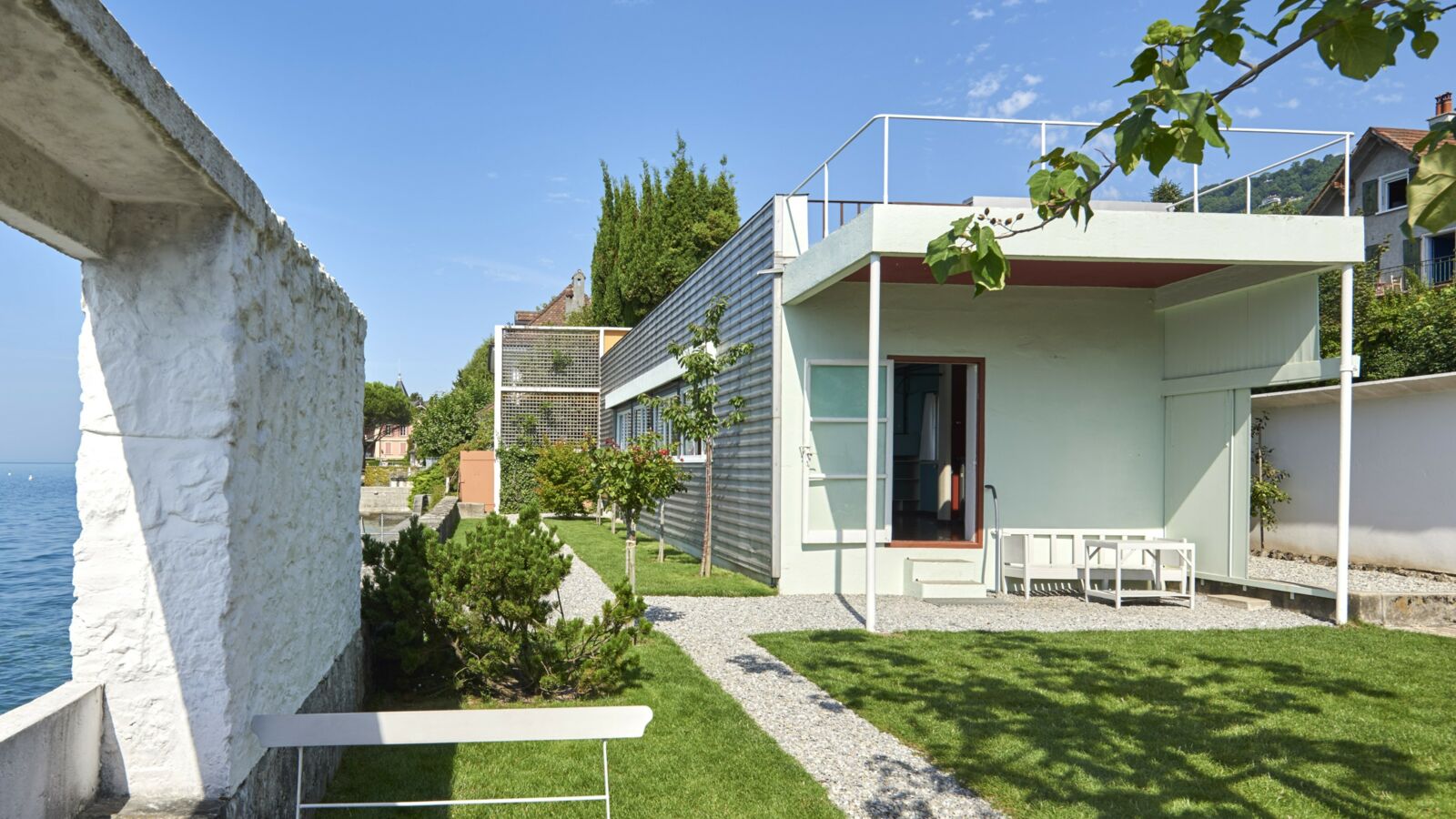Das architektonische Werk von Le Corbusier
Kriterien für die Einschreibung des "Architektonischen Werks von Le Corbusier, ein aussergewöhnlicher Beitrag zur Moderne"
Um in die UNESCO Welterbeliste aufgenommen zu werden, müssen UNESCO-Welterbestätten von aussergewöhnlichem universellem Wert sein und mindestens eines von zehn Auswahlkriterien erfüllen. Das architektonische Werk von Le Corbusier erfüllt die Kriterien I, II und VI für die Aufnahme.
Kriterium (i): Das architektonische Werk von Le Corbusier ist ein Meisterwerk menschlichen Schaffens, das eine herausragende Antwort auf einige grundlegende architektonische und soziale Herausforderungen des 20. Jahrhunderts darstellt.
Kriterium (ii): Die Serie zeigt einen noch nie dagewesenen Austausch menschlicher Werte auf weltweiter Ebene über ein halbes Jahrhundert hinweg im Zusammenhang mit der Entstehung und Entwicklung der modernen Bewegung. Das architektonische Werk von Le Corbusier hat die Architektur revolutioniert, indem es auf aussergewöhnliche und bahnbrechende Weise die Erfindung einer neuen architektonischen Sprache demonstriert, die einen Bruch mit der Vergangenheit darstellt. Die Serie markiert die Geburtsstunde von drei grossen Strömungen in der modernen Architektur: Purismus, Brutalismus und skulpturale Architektur. Der weltweite Einfluss, den das architektonische Werk von Le Corbusier auf vier Kontinenten erreicht hat, ist ein neues Phänomen in der Geschichte der Architektur und beweist seine beispiellose Wirkung.
Kriterium (vi): Das architektonische Werk von Le Corbusier steht in direktem und materiellem Zusammenhang mit den Ideen der modernen Bewegung, deren Theorien und Werke im zwanzigsten Jahrhundert eine herausragende universelle Bedeutung hatten. Die Serie repräsentiert einen "Neuen Geist", der eine Synthese von Architektur, Malerei und Skulptur widerspiegelt. Das architektonische Werk von Le Corbusier materialisiert die Ideen von Le Corbusier, die auf dem Internationalen Kongress für moderne Architektur (CIAM) von 1928 kraftvoll vermittelt wurden. Die Serie spiegelt in herausragender Weise die Versuche der modernen Bewegung wider, eine neue Architektursprache zu erfinden, die architektonischen Techniken zu modernisieren und auf die sozialen und menschlichen Bedürfnisse des modernen Menschen zu reagieren. Der Beitrag ist nicht nur das Ergebnis einer beispielhaften Leistung zu einem bestimmten Zeitpunkt, sondern die herausragende Summe von gebauten und geschriebenen Vorschlägen, die über ein halbes Jahrhundert hinweg unermüdlich weltweit verbreitet wurden.
Integrität: Die Integrität der Serie als Ganzes ist angemessen, um zu zeigen, wie die architektonische Werke von Le Corbusier nicht nur die Entwicklung und den Einfluss der modernen Bewegung widerspiegeln, sondern auch die Art und Weise, wie sie Teil ihrer Übertragung in die Welt waren. Die Integrität der meisten Baustellen ist gut. In der Cité Frugès, die sich innerhalb des Geländes befindet, stehen die neuen Gebäude auf drei Parzellen des Geländes - darunter ein standardisiertes Haus von Le Corbusier, das während des Krieges zerstört wurde - nicht im Einklang mit den Konzepten des Architekten. Bei der Villa Savoye und dem angrenzenden Gärtnerhaus wird die Integrität teilweise durch das Lycée und die Sportplätze beeinträchtigt, die in den 1950er Jahren an drei Seiten der ursprünglichen Wiese, die die Villa umgab, angelegt wurden. Die Umgebung dieses Ortes ist empfindlich. In der Maisons de la Weissenhof-Siedlung haben die Kriegszerstörungen und der Wiederaufbau in der Nachkriegszeit dazu geführt, dass die kollektive Integrität der Modellsiedlung durch den Verlust von zehn der einundzwanzig Häuser beeinträchtigt wurde. Bei der Chapelle Notre-Dame-du-Haut, wo Le Corbusiers Bauwerk über einem jahrhundertealten Wallfahrtsort errichtet wurde, wurde die Integrität des Ortes teilweise durch ein neues Besucherzentrum und ein Nonnenkloster in der Nähe der Kapelle beeinträchtigt, die Le Corbusiers Bauwerk aus seiner beschaulichen Umgebung am Hang herausschneiden. Im Immeuble locatif à La Porte Molitor wurde direkt vor der Glasfassade des Wohnblocks ein neues Rugby-Stadion errichtet.
Authentizität: Die Reihe zeigt deutlich, dass sie mehr ist als die Summe ihrer Bestandteile. Bei den meisten der einzelnen Teilstandorte ist die Authentizität gut, wenn man bedenkt, wie gut die Eigenschaften des Standorts den aussergewöhnlichen universellen Wert der Reihe insgesamt widerspiegeln. In der Cité Frugès wurden auf drei Grundstücken traditionelle Häuser gebaut, die die Corbusian-Strukturen ersetzen, während anderswo in der Stadtlandschaft ein teilweiser Verlust der Authentizität durch Vernachlässigung und Veränderungen im Inneren zu verzeichnen ist. In der Unité d'habitation hat der Brand von 2012 einen kleinen Teil des Gebäudes zerstört. Dieser wurde nun vollständig nach dem ursprünglichen Entwurf rekonstruiert, allerdings mit einem gewissen Verlust an Authentizität. Die Authentizität des bestehenden Kapitolkomplexes könnte durch den Bau des Gouverneurspalastes oder des Museums des Wissens beeinträchtigt werden, eine Möglichkeit, die offenbar diskutiert wurde. Beim Musée National des Beaux-Arts de l'Occident scheint die ursprüngliche Absicht für den Vorplatz des Museums eine grosse Freifläche zu sein. Die 1999 vorgenommene Bepflanzung des Vorplatzes beeinträchtigt tendenziell die Präsentation des Gebäudes, seiner wichtigsten Ansichten und der Umgebung. Die jüngsten Entwicklungen an der Chapelle Notre-Dame-du-Haut haben die Authentizität des Ortes im Hinblick auf seine Fähigkeit, die Ideen von Le Corbusier zu vermitteln, teilweise beeinträchtigt. Beim Immeuble locatif à La Porte Molitor hat das neue Stadion die Fähigkeit der Glaswände dieses Ortes beeinträchtigt, seinen Wert zu vermitteln, ohne jedoch seine Authentizität zu schmälern. Was die Materialien betrifft, so wurden einige Stätten in den letzten Jahren restauriert und teilweise rekonstruiert, nachdem sie vernachlässigt oder verunstaltet worden waren. Insgesamt können die Änderungen als angemessen und verhältnismässig angesehen werden.
Weitere Informationen findest du unter whc.unesco.org.










